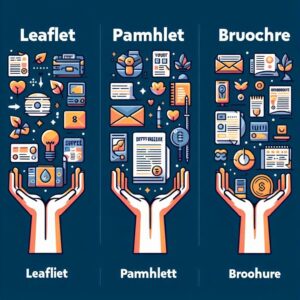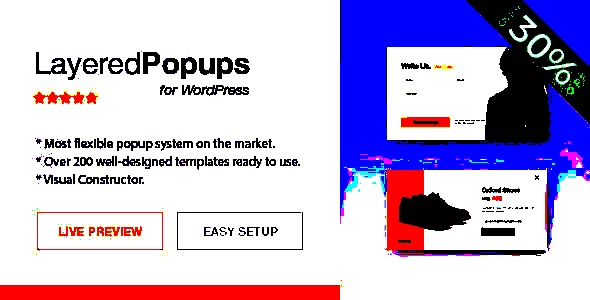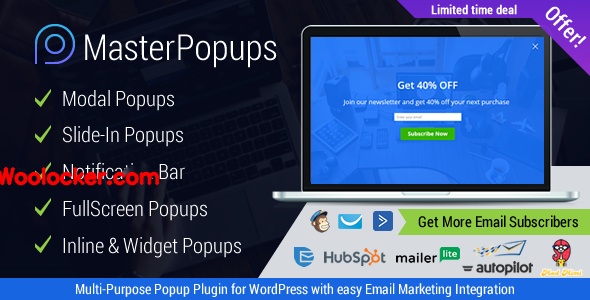| Feature | Leaflet | Pamphlet | Brochure |
|---|---|---|---|
| Pros | |||
| Cost | Generally low cost due to simple design and minimal content. | Relatively low cost but slightly higher than leaflets due to more content and pages. | Higher cost due to quality materials, more pages, and complex designs. |
| Distribution | Easy and cheap to distribute; can be handed out, mailed, or included in packages. | Fairly easy to distribute in various locations and events. | Suitable for targeted distribution in high-traffic areas and events. |
| Production Time | Quick to produce due to simple format and less content. | Moderate production time; more content but still relatively simple. | Longer production time due to detailed design, higher quality, and more content. |
| Content | Direct and concise information; ideal for quick, impactful messages. | More detailed than leaflets, providing thorough information on a specific topic. | Detailed and comprehensive; suitable for in-depth presentations of products or services. |
| Design | Simple design makes it easy to read and understand quickly. | Allows for more creative design than leaflets, but still straightforward. | Highly customizable with sophisticated design options to capture attention. |
| Storage | Compact and easy to store in bulk. | Still compact but can take up more space than leaflets. | May require more storage space due to size and quality. |
| Versatility | Suitable for a wide range of uses, including events, promotions, and announcements. | Versatile for educational purposes, detailed promotions, and informative guides. | Best for marketing purposes, showcasing products, and providing detailed company information. |
| Cons | |||
| Durability | Often made from thin paper; can be easily damaged. | Generally made from standard paper, more durable than leaflets but still prone to wear. | Made from higher quality materials, but still can be damaged if not handled properly. |
| Content Limitations | Limited space for detailed information. | More space than leaflets but can still be limiting for very detailed information. | Can hold extensive information, but risk of being too lengthy for quick reads. |
| Perception | May be perceived as low-budget or less professional. | Viewed as informative but not always as engaging as brochures. | Perceived as high-quality and professional, but may be seen as excessive for simple messages. |
| Environmental Impact | Often single-use, contributing to waste. | Similar to leaflets but slightly more durable, still contributing to waste. | Higher quality materials can mean more significant environmental impact if not recycled properly. |
Leaflet
Definition and Characteristics: A leaflet is a single sheet of paper, often printed on both sides, that provides concise information on a particular topic. It is typically used for promotional purposes, events, or announcements. Due to its simplicity and cost-effectiveness, it is a popular choice for businesses and organizations looking to quickly disseminate information.
Uses:
- Promotions and Discounts: Businesses use leaflets to advertise special offers, sales, or discounts.
- Event Announcements: Leaflets are commonly distributed to promote upcoming events such as concerts, fairs, or public meetings.
- Awareness Campaigns: Organizations use leaflets to spread awareness about issues such as public health, environmental concerns, or community programs.
Pros:
- Cost-Effective: Low production costs make leaflets an affordable option for mass distribution.
- Easy Distribution: They can be handed out in public places, included in mailings, or left in stacks at strategic locations.
- Quick Production: Simple design and minimal content allow for fast production times.
Cons:
- Limited Space: The single-sheet format restricts the amount of information that can be conveyed.
- Durability: Typically made from thin paper, leaflets are prone to damage.
- Perception: May be seen as low-budget or less professional compared to more elaborate marketing materials.
Pamphlet
Definition and Characteristics: A pamphlet is a small booklet or folded paper that provides more detailed information than a leaflet. It usually consists of a few pages and covers a specific topic in greater depth. Pamphlets are often used for educational purposes, detailed guides, or informative content that requires more space than a leaflet can provide.
Uses:
- Educational Materials: Pamphlets are used to provide information on health issues, educational programs, or detailed explanations of services.
- Product Guides: Businesses use pamphlets to explain the features and benefits of their products or services in detail.
- Instruction Manuals: They can serve as quick reference guides or manuals for using a product or service.
Pros:
- Detailed Information: More space allows for thorough explanations and detailed content.
- Creative Design: Offers more room for creativity in layout and design compared to leaflets.
- Versatility: Suitable for various purposes, including education, promotion, and instruction.
Cons:
- Higher Cost: More expensive to produce than leaflets due to additional pages and more complex designs.
- Moderate Production Time: Takes longer to produce than leaflets due to the increased content and design complexity.
- Storage: Requires more storage space than leaflets, especially in bulk.
Brochure
Definition and Characteristics: A brochure is a multi-page document, often folded and printed on high-quality paper, designed to provide comprehensive information about a company, product, or service. Brochures are typically used in marketing to create a professional and lasting impression on potential customers.
Uses:
- Marketing and Advertising: Businesses use brochures to showcase their products or services, highlight company achievements, and build brand identity.
- Travel and Tourism: Travel agencies and tourism boards use brochures to provide detailed information about destinations, tours, and travel packages.
- Corporate Communication: Companies use brochures for annual reports, corporate profiles, and detailed presentations.
Pros:
- Comprehensive Content: Offers ample space for detailed information, high-quality images, and compelling narratives.
- Professional Appearance: High-quality materials and sophisticated designs enhance the perception of professionalism and quality.
- Effective Marketing Tool: Ideal for making a strong, lasting impression on potential clients and partners.
Cons:
- Higher Cost: The production of brochures is more expensive due to quality materials, complex designs, and more pages.
- Longer Production Time: Requires more time to produce compared to leaflets and pamphlets, owing to the detailed design and content.
- Environmental Impact: The use of high-quality materials and multiple pages can have a greater environmental impact if not recycled properly.
Each of these marketing tools—leaflets, pamphlets, and brochures—serves different purposes and has its own set of advantages and disadvantages. Choosing the right one depends on the specific needs of your campaign, your budget, and the amount of information you need to convey.


